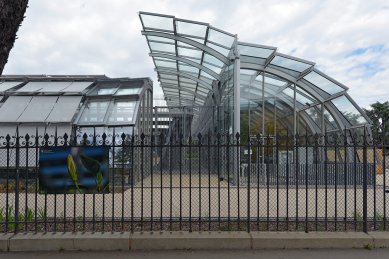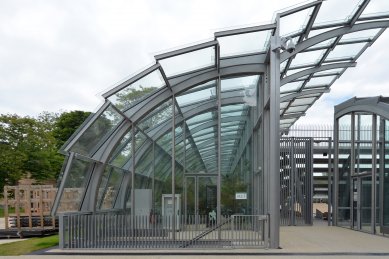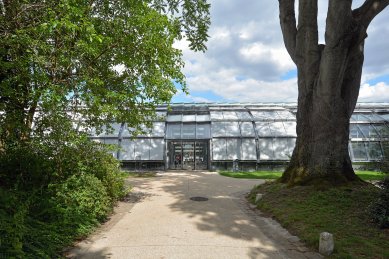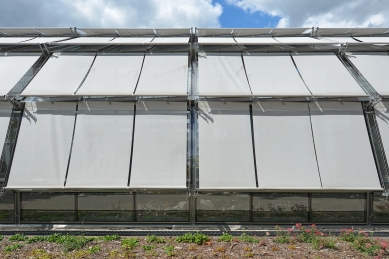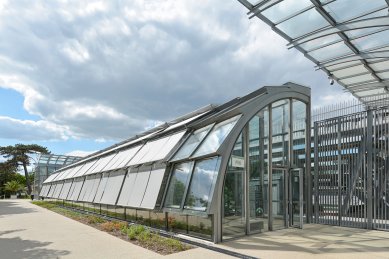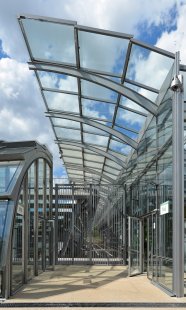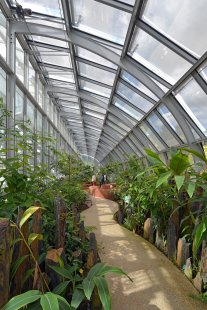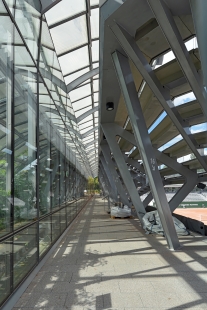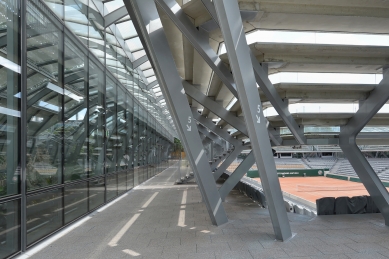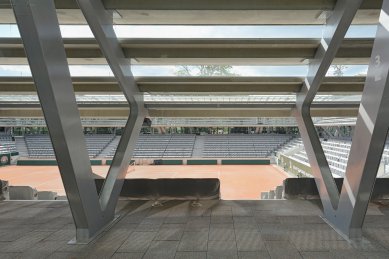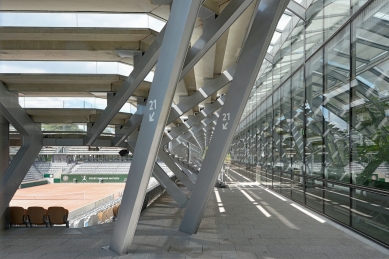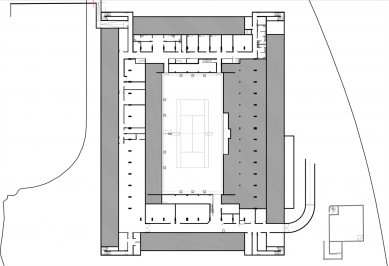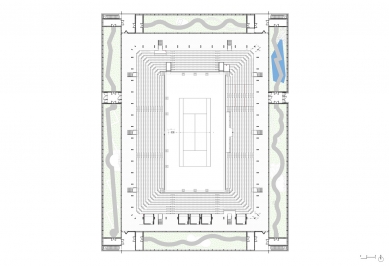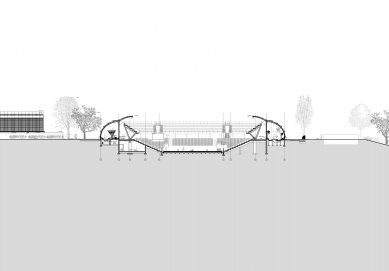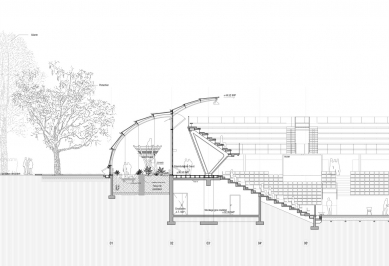
Simonne Mathieu Tennis Court
Court Simonne Mathieu

The tennis complex of Roland Garros consists not only of the main stadium, where we are accustomed to watching the finals of the French Open Grand Slam, but also dozens of smaller courts with stands and training fields. With increasing popularity, the demand for playing surfaces is also growing, and thus the sports complex on the southern edge of Boulogne Forest is literally bursting at the seams. One solution is a tennis court named after former French tennis player Simonne Mathieu, which was completed in the adjacent botanical garden Jardin des serres d'Auteuil on the outskirts of Paris. This interesting hybrid designed by local architect Marc Mimram combines two seemingly incompatible typologies: a tropical greenhouse and a sports facility with seating for 5,000 spectators. The first tournaments took place on the clay court already this spring, but the greenhouses were opened to visitors of the botanical garden only on June 21, 2019. More than merely expanding the capacity of the facilities, the intent was to bring the Roland Garros complex closer to the city. Visitors to the botanical garden thus have global sports events within reach. The generously glassed steel structure of the new tennis court takes inspiration from the adjacent cast-iron greenhouses built in 1898 designed by Jean-Camille Formigé. Half of the volume of the tennis court is sunken into the ground. A quartet of greenhouses with a quarter-cylinder shape (two greenhouses 70 m long and two greenhouses 40 m long) offers various climatic conditions and represents the flora of four different continents (America, Asia, Africa, and Oceania). The greenhouse features a cantilevered partial roof covering the spectator stands. All glazed surfaces can be shaded using external textile blinds. The supporting structure of the upper stands is completely independent of the greenhouse, but the visual connection is omnipresent. The main wish of landscape architect Michel Corajoud was to create a dialogue between garden and sport, botany and tennis, technique and physical performance.
The English translation is powered by AI tool. Switch to Czech to view the original text source.
2 comments
add comment
Subject
Author
Date
... Tak tohle...
šakal
02.07.19 09:19
vidět potenciál
Petr Šmídek
02.07.19 10:32
show all comments





